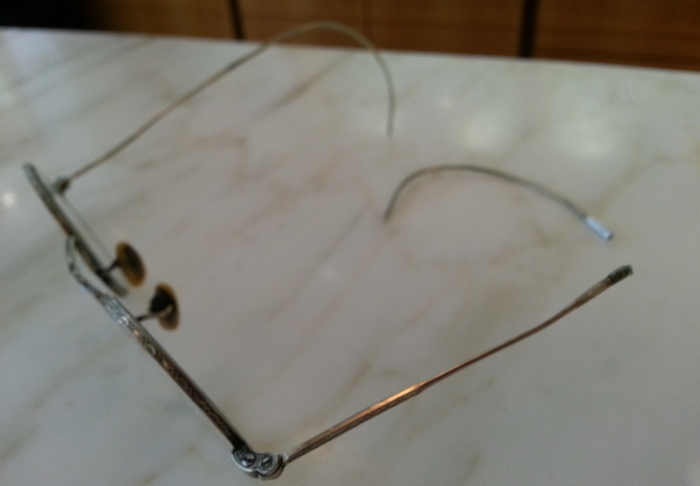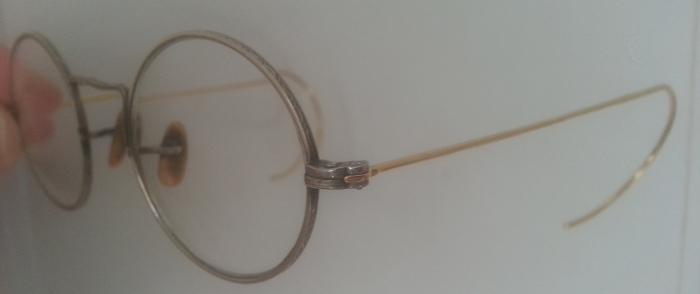Two or three years ago I bought “vintage” (i.e. “used”) eyeglasses from Gadabout way out east on Queen here in Toronto. I took them to Josephson Opticians and had my new prescription put in and everything worked very well … until the left temple began to get wiggly in the middle and eventually broke in two.
 </a>
</a>
I tried tape and glue, but nothing held it together, so I took the glasses back into Josephson to see what they could do. They said they couldn’t weld it—the metal was too thin and that never worked for temples—but they could just order in new temples. The glasses were old, so they used standard parts, and those parts were still available.
It turns out that eyeglasses all used to use standard parts—the frames and design would be different, but the temples and nose pads and hinges and such all had common sizes and screws and could be swapped in or replaced. In Canada today the place to get those parts is McCray Optical Supply, which sells cable temples coloured gold and silver in the common 105 mm length.
New eyeglasses all have different parts. Each manufacturer makes their own hinges and nose pads and you can’t move a piece from one pair over to another’s. When you get glasses now, you’re buying into a closed, proprietary system. The user freedom that came from open standards and open hardware is gone.
I’m happy my eyeglasses are part of the older open spectacle world. The new temples fitted and the glasses are back in action.
 </a>
</a>
 Miskatonic University Press
Miskatonic University Press